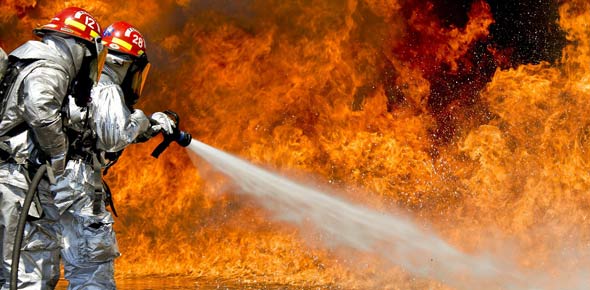What tool should you always use to remove the safety wire from a...
When using the fault isolation (FI) manual to troubleshoot an F-16,...
Before operational use or during assembly and buildup involving SMDCs,...
When removing the F-15 #3 pyrotechnic module on an aircraft, you...
When performing a dual-seat F-16 canopy removal, Technician C's...
Except for SOLO mode, what is the sequence of operation for two-seat...
When installing the F-15 #3 pyrotechnic module on the aircraft, what...
What should be done if the F-22 oxygen system pressure gauge reads...
When troubleshooting an F-16 canopy system, if you have verified that...
While performing the operational checkout of the F-16 seat height...
When inspecting SMDCs, what tool do you use to compare the size and...
To gain access to the F-15 #3 pyrotechnic module when removing it on...
Which F-22 escape system component provides sequenced firing signals...
When installing the F-15 #3 pyrotechnic module, remove foreign objects...
During an F-22 ejection, at what speed and altitude is Mode 1...
When performing the operational checkout of the ejection seat arm-safe...
What type of energy transfer line does the F-16 emergency escape...
During an F-22 ACES II Mode 3 ejection, when does the pilot's...
What F-16 canopy jettison explosive component releases the canopy from...
F-16 canopy remover rockets are initiated by
What types of DTA lines contain a primary explosive that may be...
When removing the f-15 #3 pyrotechnic module on the aircraft, what is...
During a dual seat F-16 ejection when the ejection mode selector valve...
The F-22's rocket motor fires during canopy jettison through
When rigging a dual-seat F-16 canopy actuator, what should the canopy...
To how many inch-pounds should you torque DTA nuts?
The first thing you must remove before removing an F-15 #3...
How many canopy jettison initiators are installed on...
When installing a dual-seat F-16 canopy, you stop lowering the...
If detonation transfer assembly (DTA) line threads are not...
What are the three modes of operation on the F-15E emergency escape...
What are the modes of ejection available for an F-16 dual seat...
What begins the ejection sequence on an F-22?
The best description of the F-15E canopy is that it's a
What are the four positions for setting the F-15 canopy control...
When troubleshooting an F-16 canopy system, if the canopy warning...
What action should you take if you find a cut on the rubber seal at...
What F-16 escape system component keeps the pressure of the gas in the...
You should cease F-16 canopy maintenance if wind speed exceeds how...
What type of energy transfer lines does the F-15E emergency escape...
During dual-seat F-16 canopy jettison during seat ejection, the...
How many broken strands are allowable on wire braid outer coverings of...
During a Mode 2 ejection on the F-22, what begins the same time the...
Using the detonation transfer assembly (DTA) and emergency canopy...
Where is the F-16's emergency canopy release line (ECRL) located?
At least how many degrees of arc should be allowed between adjacent...
When performing a dual-seat F-16 canopy removal, you should fully open...
The F-15E external canopy jettison initiator is fired by
The total surface area of dents on a SMDC booster...
During F-16 canopy removal, you should check that
When the F-15E canopy jettison system is initiated externally, what...
Which dual seat F-16 explosive component fires each seat's inertia...
When you install the tension tubes on a dual-seat F-16 during canopy...
When installing the F-15 #3 pyrotechnic module, apply a dry air or...
When installing an F-15 #3 pyrotechnic module, what do you...
Which component extends the canopy remover piston when the F-15E...
Where are the F-15E's internal canopy jettison handles...
Which F-22 components are actuated by the internal or external canopy...
What is the danger area if the canopy is jettisoned on the F-22 during...
After the F-16 canopy is installed, you should check that
Approximately ho far is the lanyard pulled when externally initiating...
How is the F-22 drogue parachute deployed?
During normal operation, which F-22 canopy jettison component acts as...
During F-22 canopy jettison, how many inches does the canopy travel...
When F-15E ejection is initiated in NORM mode by...
Which F-22 canopy jettison feature ensures full latch release prior to...
Where inside the F-22 cockpit is the internal canopy jettison handle...
















